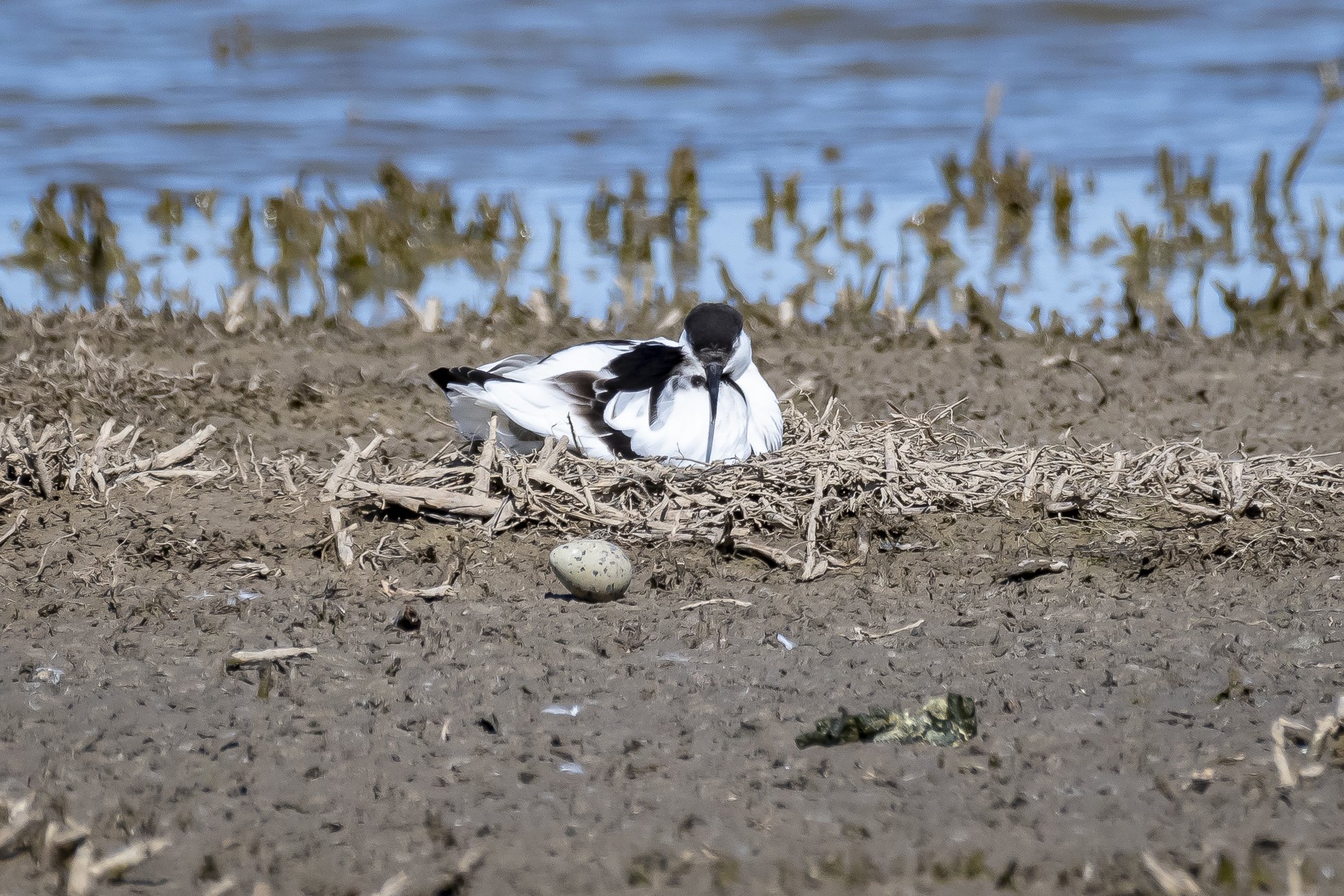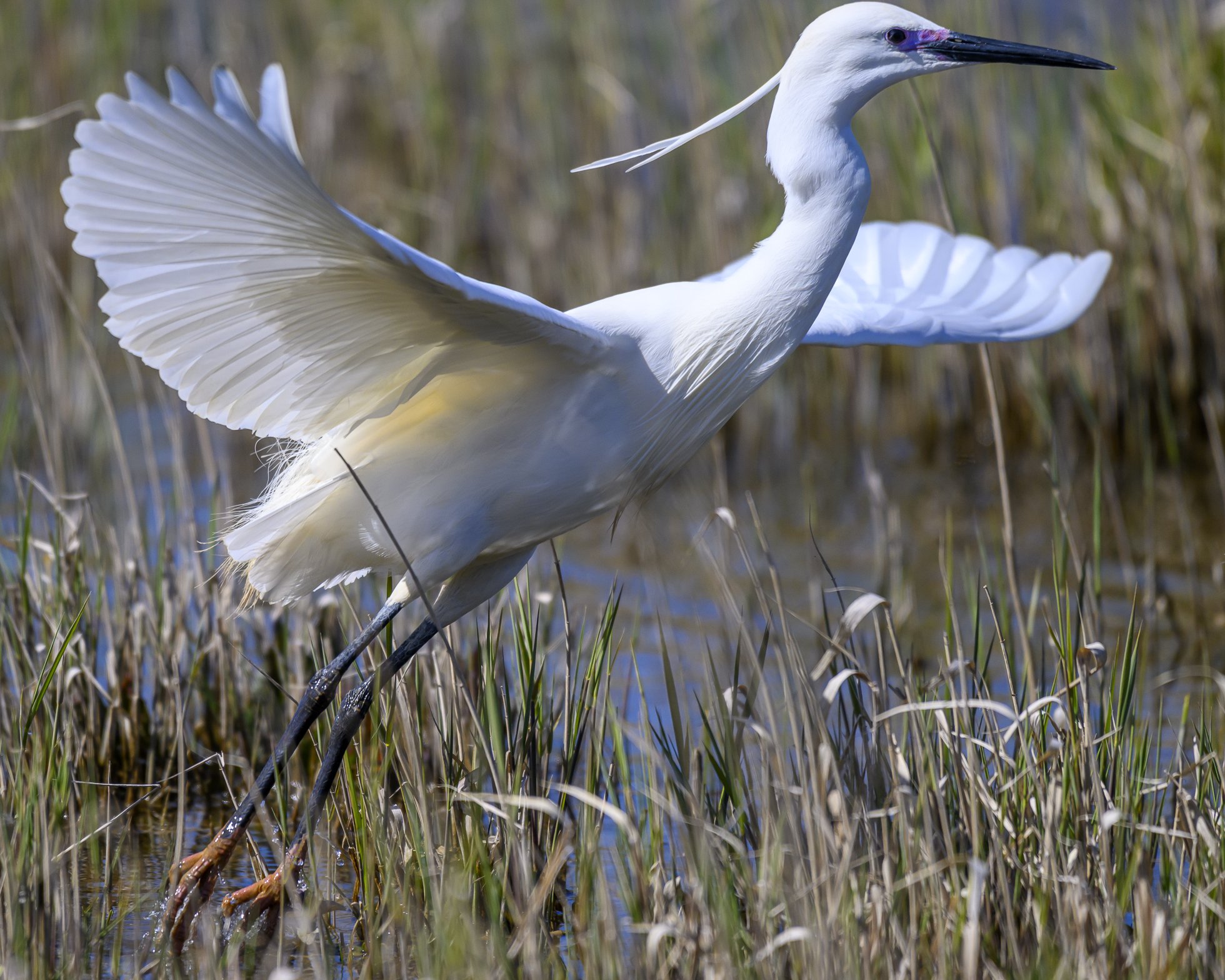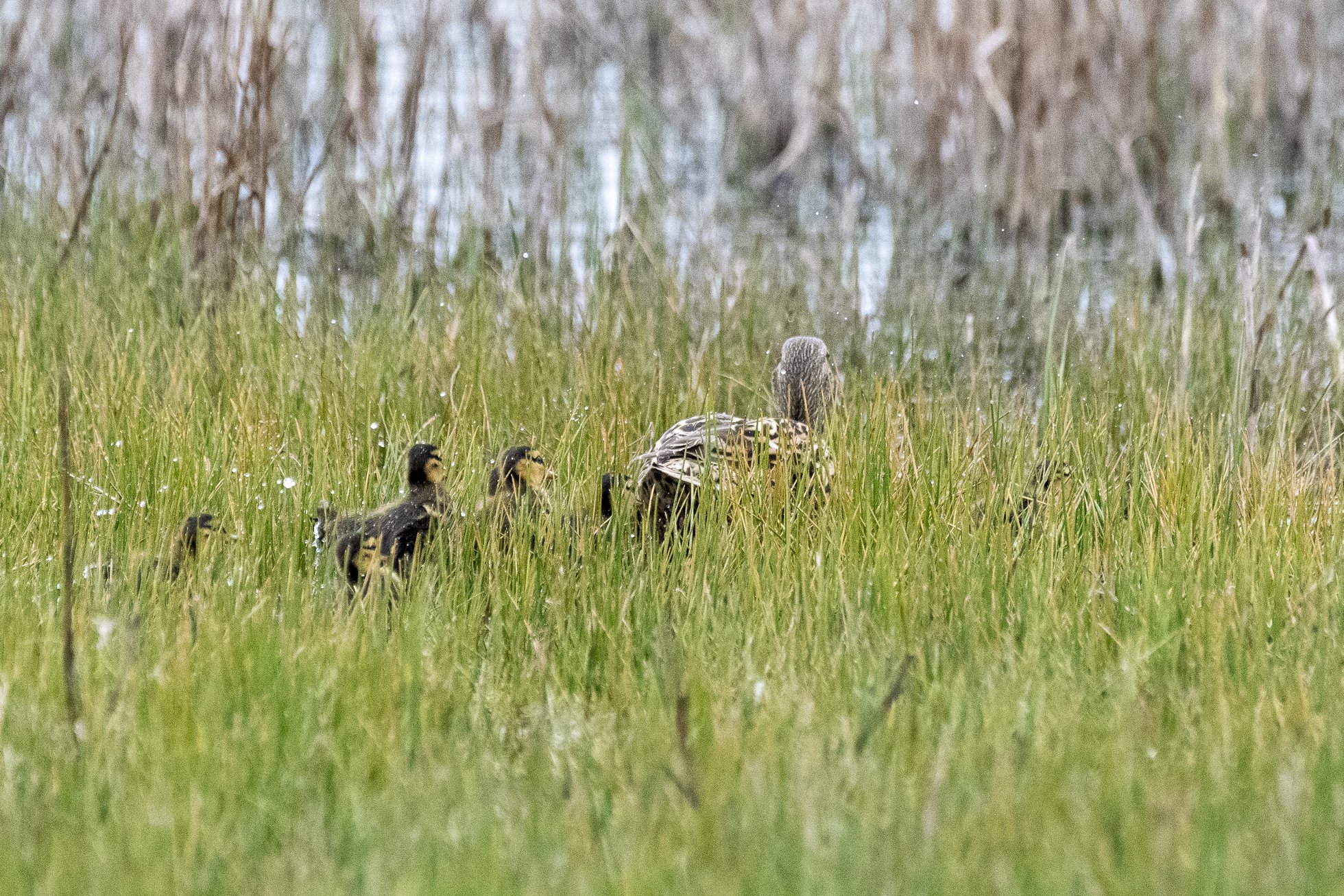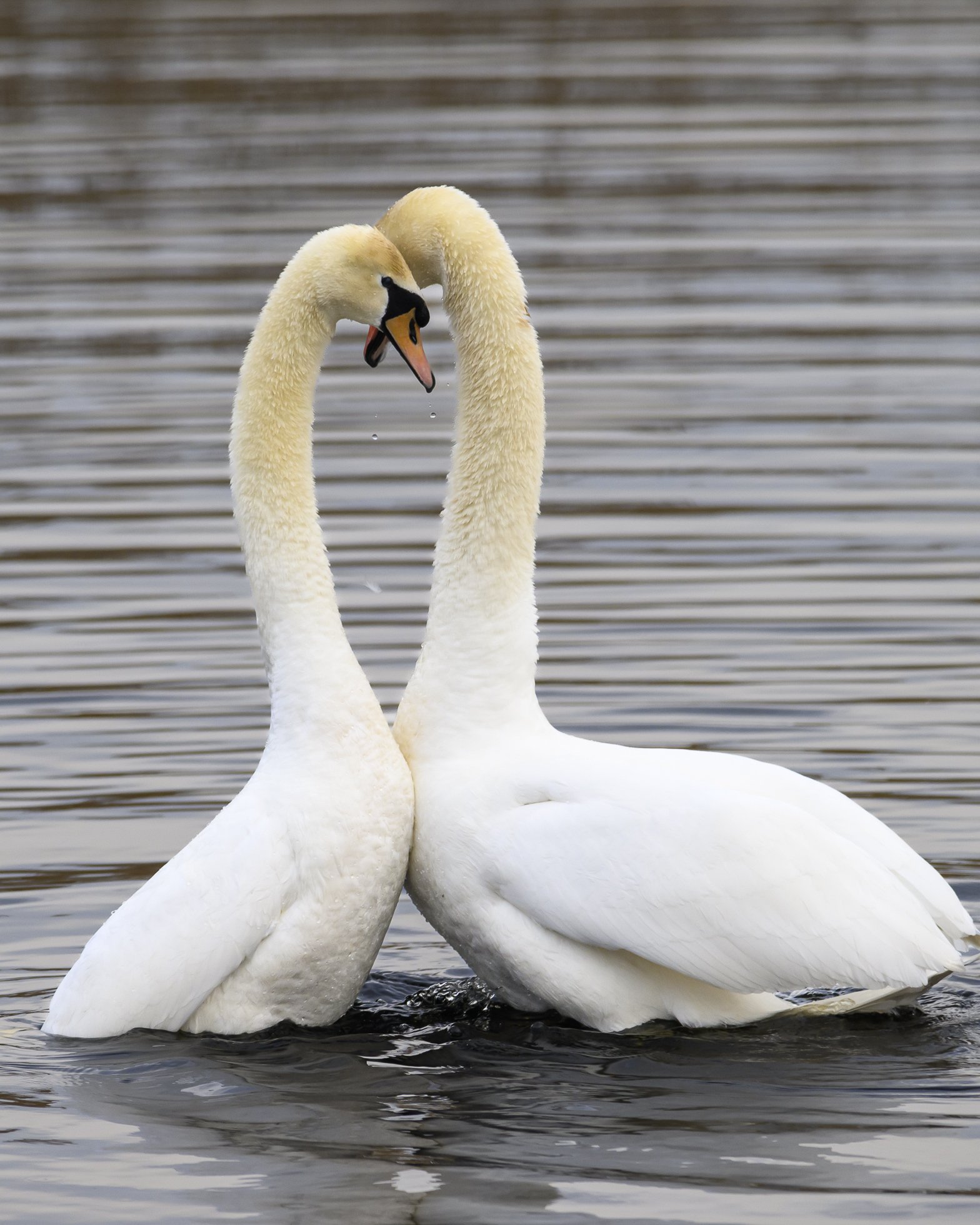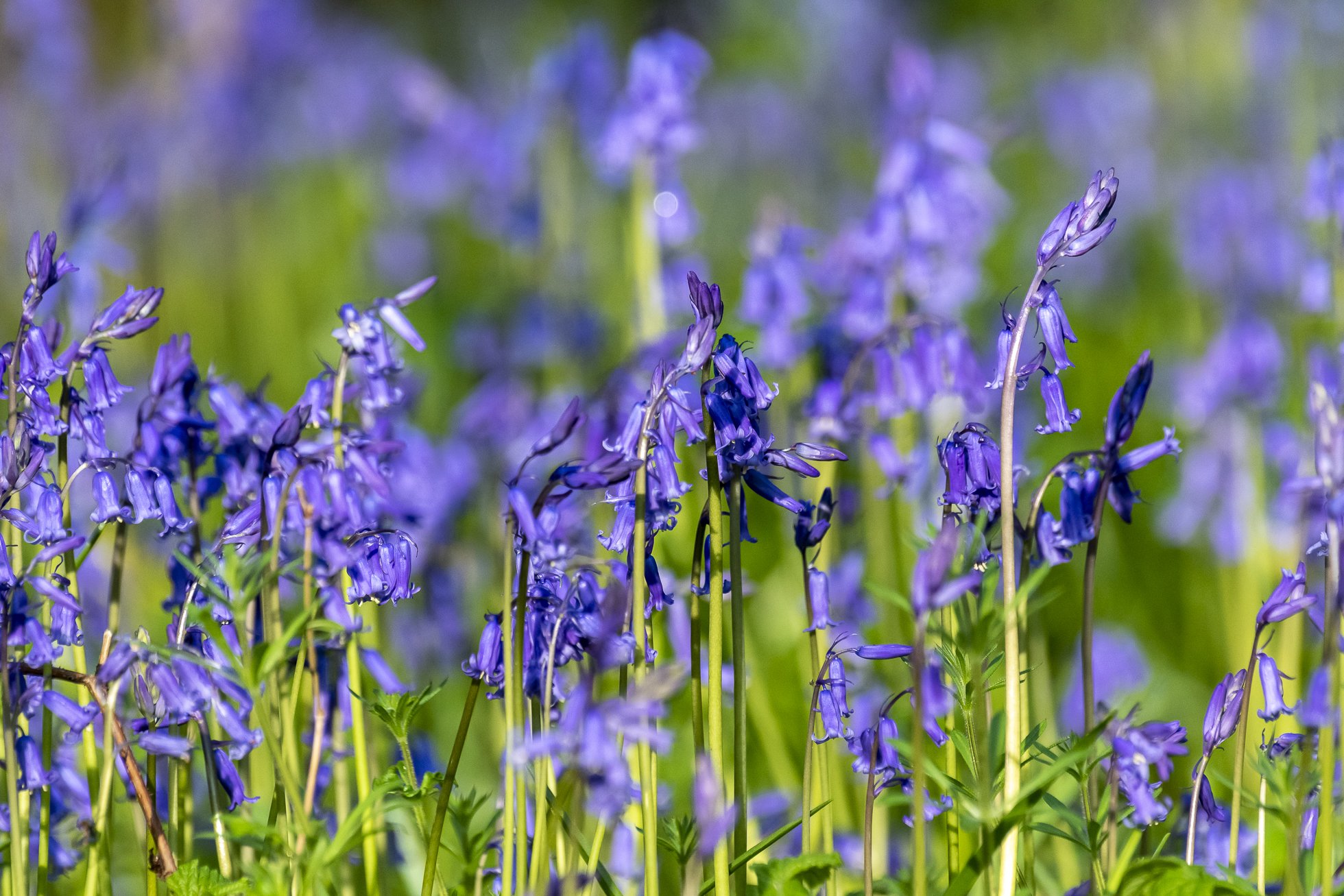Five days in Norfolk and we did nothing, except Dog Walking and Bird Watching.
Kelling Heath, Holt Country Park, Cley Marshes NWT, Ranworth Broad NWT, and Sculthorpe Moor (The Hawk and Owl Trust) all produced some stunning encounters with wildlife.
Beautiful clear skies and sunshine, although not commonly the best for photographing as it can cause too much contrast, this time proved to be excellent to gain high shutter speeds and low ISO for action shots such as birds in flight.
The extremely lazy bitterly cold north/north easterly winds were keeping many migrants at bay, and who could blame them. Still, by the end of the week the Swallows and Martins and Warblers had started to arrive and many resident species had love on the brain.
Avocets are one of the RSPB great success stories. This Schedule 1 species is the emblem of the RSPB and symbolises the bird protection movement in the UK more than any other species. Its return in the 1940s and subsequent increase in numbers represents one of the most successful conservation and protection projects.
You do have to wonder how the Avocet made such a comeback when you see pictures like this. You can almost see her thinking, “Is that mine?”
Lots of this sort of thing going on, and right in front of the hide as well.
The celebrity of the week at Cley was this Long Billed Dowitcher. The Long-billed Dowitcher is a rare visitor to Britain. It Breeds in northeast Siberia and northwest Alaska and winters in the USA to Central America. So it is a long way from home.
The Dowitcher took a dislike to the Black tailed Godwit, only he knows why as the Godwit was busy feeding and minding his own business. The Dowitcher decided to dunk him under the water.
Whilst watching the antics of the Long Billed Dowitcher herself caught a movement out of the corner of her eye. An Otter appeared in one of the channels. A quick picture as it spotted the people in the hide and was gone.
Such a handsome Teal sprucing himself up in the sunshine.
Most Ruff you will see are fairly plain-looking waders, with a longish neck and small head. Breeding males, however, have a ruff of brightly coloured feathers around the neck, hence the name, head tufts and a bare, orange face.
Ruff breed in a very few lowland sites in eastern England and it appears numbers are dropping. It is a migrant but in the UK some birds are present all year round. It is listed under Schedule 1 of The Wildlife and Countryside Act.
Love this artwork on the terrace at Norfolk Wildlife Trust Visitor Centre, Cley.
It is so worth sitting and waiting in the hides as you never know what is going to drop in. Late afternoon, early evening in Bishops Hide at Cley and in flew a Spoonbill. He stayed quite a while, feeding and preening before taking off towards the back of the mere to join about four others. As you can imagine we took rather a lot of pictures of this bird.
Such an amazing bird.
A tasty morsel to be going on with. Spoonbills swing their slightly open beaks from side to side through shallow pools of water. Their remarkable bill is packed full of sensors attuned to the tiniest vibrations, and once located, unlucky beetles, crustaceans, worms, small fish, tadpoles and frogs stand no chance of escape. So fascinating to watch.
Spoonbills are named after their bizarre spatula-like bill. Although they bred in East Anglia during Medieval times, spoonbills had not bred in Britain for over 300 years until 2010, when a small colony was discovered on the north Norfolk coast. Just look at the markings on that bill.
Another wader landing near the hide, a Little Egret. The little egret is a white heron with black legs and yellow feet. It has a black bill and long plumes on its head and neck during the breeding season.
Once a very rare visitor from the Mediterranean, Little Egrets are now a common sight around the coasts of southern England and Wales. The Little Egret was hunted extensively in the 19th century to provide plumes for the decoration of hats and became locally extinct in northwestern Europe and scarce in the south. Around 1950, conservation laws were introduced in southern Europe to protect the species and their numbers began to increase. By the beginning of the 21st century the bird was breeding again in France, the Netherlands, Ireland and Britain. The feathers look so much better on the bird than on a hat, stupid idea.
Bar Tailed Godwit. Godwits are on the move this month to their breeding grounds in Scandinavia and the Arctic. If he doesn’t get a move on he is going to get left behind.
A taking off Gadwall.
Lapwings are truly beautiful birds and when seen in the correct light with the sun on their feathers you can see all their lovely colours. This familiar farmland bird has suffered significant declines recently and is now another Red List species.
Little Ringed Plovers were chasing each other around the island. Honestly, they were so funny, like little clockwork birds.
A pair of Gadwall quietly sunning themselves out of the cold wind in a patch of freshly growing reeds.
A very sheltered warm spot for a very contented Mute Swan on her nest.
The magnificent Marsh Harrier.
Osprey in Norfolk, who would believe it.
The morning we decided to visit Ranworth Broad it was a bit cloudy, very windy and extremely cold. Still, the hardy souls that we are we took the Norfolk Wildlife Trust boat trip out onto the broad to see if we could spot the Osprey which has decided to spend his summer holidays there. It was a bit like heading out on the North Sea but probably not quite as choppy. We couldn’t get too near for fear of disturbing the bird, and with the boat bobbing up and down and poor light this was the best record shot we could manage. Last year a female turned up and it looks like he is looking for her again this year. The nest is ready and waiting on a platform. If they do manage to breed it will be the first breeding pair of Ospreys in Norfolk for 250 years.
All these rare birds making Norfolk their home means that the county must be doing something right for wildlife, its heartening.
The Great Crested Grebes were in love. The quiet electric boat took us quite close to the Grebes and they had things on their mind so were not bothered at all.
“Lets look at the stars…”
Plenty to eat in Ranworth Broad.
“Do you mind I’m having a bath”
You can get really close to the birds such as this Chaffinch at Sculthorpe Moor Nature Reserve, owned by the Hawk and Owl Trust. A lovely reserve with boardwalks, top class hides and feeders dotted around. Lots of places to sit and just watch the wildlife. We heard our first Cuckoo of the year here, and Chiff Chaffs we calling everywhere.
Under the feeders and away from predators a little Bank Vole had found a secret place to hide.
Lovely close views of Bullfinches from most of the hides at Sculthorpe.
Greenfinches were seen at the feeders as well.
A female Blackbird watched us closely.
Dog walking back at Kelling Heath, dog on a lead because of Adders, and a male Muntjac disappeared into the gorse.
The gorse was in fall bloom making for lovely images as the Red Linnets perched on top.
Stonechats pairing up and looking for nesting sights.
Bird on the wire, or Dartford Warbler to be precise.
This small, dark, long-tailed warbler is resident in the UK and has suffered in the past from severe winters. The Dartford warbler's population crashed to a few pairs in the 1960s, since then it has gradually recovered, increasing in both numbers and range. It is still regarded as an Amber List species.
Such a lovely sound, a Male Blackbird singing away in the sunshine.
Every patch of gorse needed to be searched as small birds darted everywhere. Most of them were Chiff Chaffs.
A Norfolk Jay. Handsome but deadly predators in Holt Country Park.
One of the best places to see Hares is Norfolk. Scan any field this time of year and you are bound to see them.
Mum Mallard leading her tiny chicks down to the water at Kelling Water Meadows.
Also down at the water meadows a cock Pheasant with his ladies.
A couple of trips were made by us this month to our fairly local reserve at Wood Walton Fen. Again, the Chiff Chaffs had arrived here as well.
She has spied something. Don’t reckon much for its chances.
More entertaining than any TV programme. The Canada Goose was not tolerating the Grey Lag Goose anywhere on the mere, and the Grey Lag knew it and kept coming back. Meanwhile the Mute Swans could not tolerate the Canada Goose and chased him all over the water. And so the saga continued.
On arriving early one morning we were fortunate enough to watch the romantic dance of the Mute Swans.
A pair of Tree creepers were busy nest building. In fact everything was busy, busy, busy.
A young Muntjac had found a lush patch of grass all to himself at the side of the hide and stayed grazing for quite a while. So cute.
Back at home in the garden a pair of Great Spotted Woodpeckers have found the feeder. They are quite skittish and fly as soon as they spot any movement so took this picture of the male through the window. We moved the feeder a bit higher and more out into the open and they seem to prefer it here.
On a warm morning a female Smooth Newt appeared at the side of our small garden pond. We think it was a female as this time of year the males have breeding colours under their belly and develope a small crest.
So, no matter how small your garden, build a pond and wildlife will always be attracted to it.
End of April, and without fail, our local wood is again awash with the Colour and scent of Bluebells.
Arum Maculatum, Cuckoo Pint, and Lords and Ladies are all names for this woodland spring plant.
We have quite a few Muntjac in our local wood now.
In May our wildlife adventures continue on the Scottish Isle of Arran. We just cant wait. Hoping to see Red Squirrels, Golden Eagles, Black Guillemots, and Eider Ducks. Also an added bonus is the possibility of Dolphins and Basking Sharks in the waters around the island. Or we could end up seeing nuffink at all.



